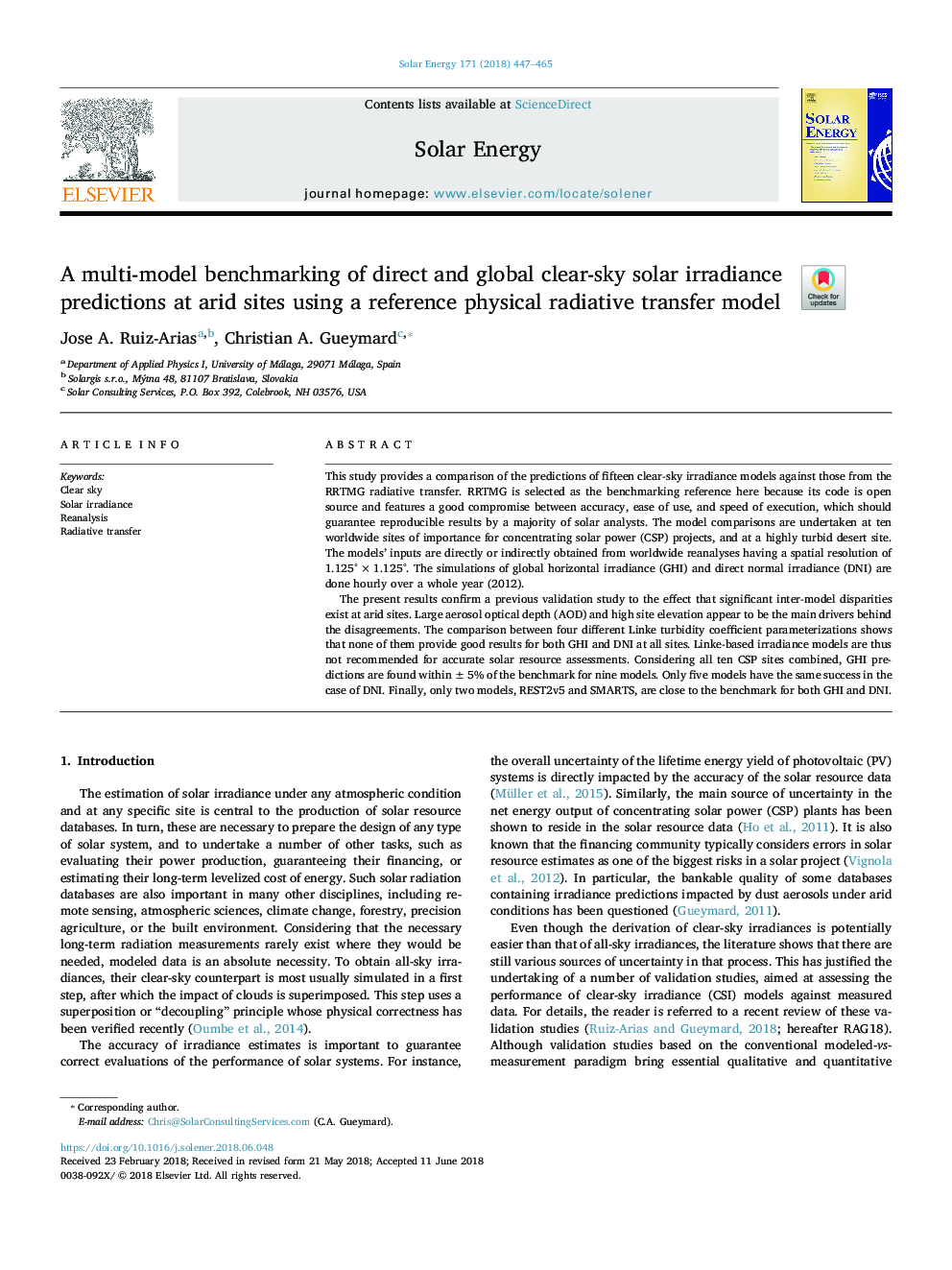| Article ID | Journal | Published Year | Pages | File Type |
|---|---|---|---|---|
| 7935015 | Solar Energy | 2018 | 19 Pages |
Abstract
The present results confirm a previous validation study to the effect that significant inter-model disparities exist at arid sites. Large aerosol optical depth (AOD) and high site elevation appear to be the main drivers behind the disagreements. The comparison between four different Linke turbidity coefficient parameterizations shows that none of them provide good results for both GHI and DNI at all sites. Linke-based irradiance models are thus not recommended for accurate solar resource assessments. Considering all ten CSP sites combined, GHI predictions are found within ±5% of the benchmark for nine models. Only five models have the same success in the case of DNI. Finally, only two models, REST2v5 and SMARTS, are close to the benchmark for both GHI and DNI.
Related Topics
Physical Sciences and Engineering
Energy
Renewable Energy, Sustainability and the Environment
Authors
Jose A. Ruiz-Arias, Christian A. Gueymard,
